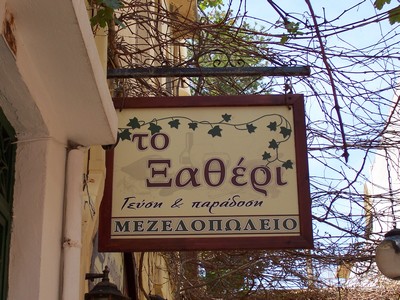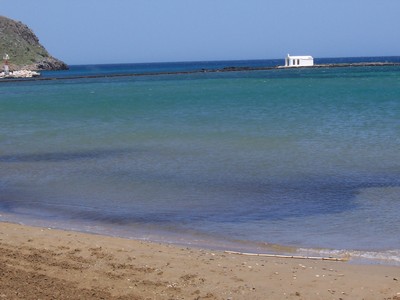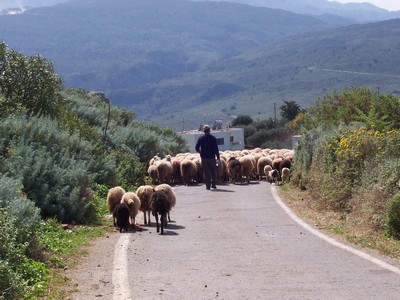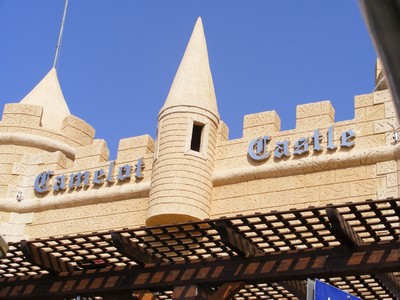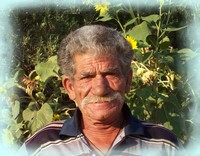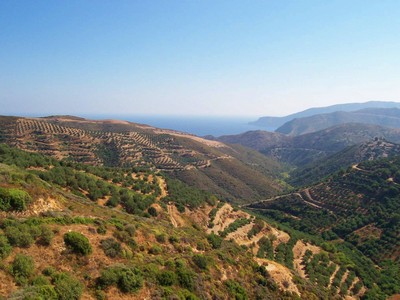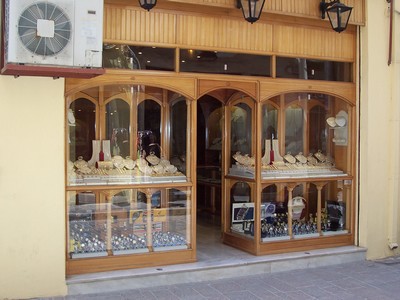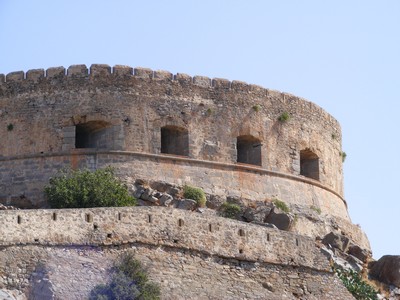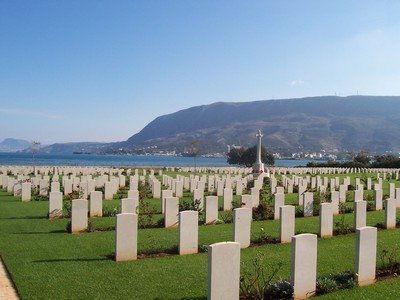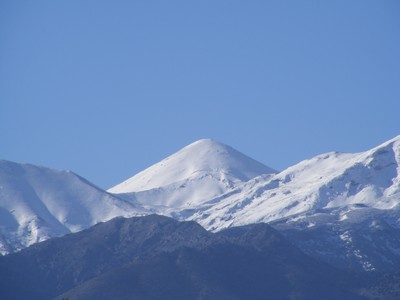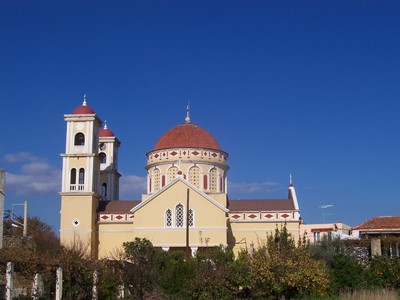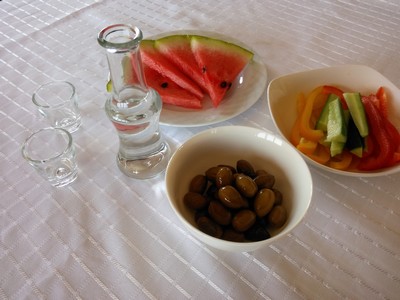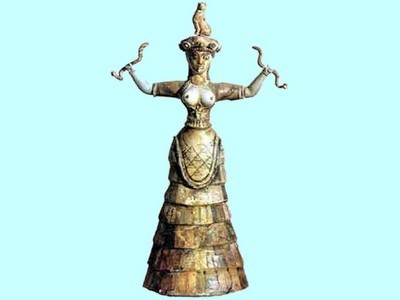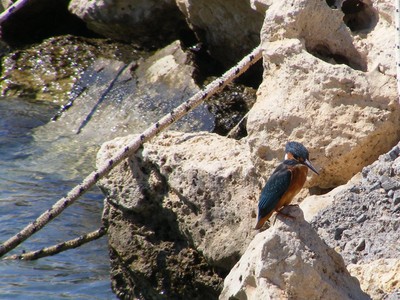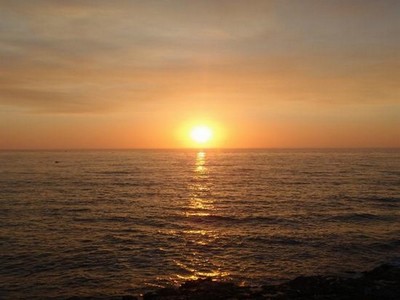Crazy about the Greek island of Crete!
Chania Market Shopping Guide
Table of Contents
Introduction to Our Chania Market Shopping Guide
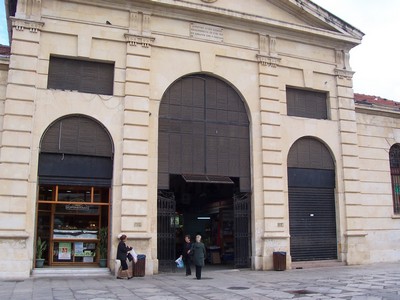
Here's our comprehensive Chania Market Shopping Guide!
The daily Chania Market or Agora is very popular with tourists and locals alike; with all manner of ingredients from the Cretan Diet on sale.
The rather grand covered market at the centre of the town of Chania was opened in 1913 by Eleftherios Venizelos as part of the celebrations for the Unification of Crete to Greece.
Modelled after the market of Marseilles, it is said to be the best indoor market in Europe, (and we agree!) It is both a magnificent building architecturally and a fabulous place inside to shop and eat.
The cross-shaped structure of the building houses 76 shops and cafes grouped according to what they are selling in the four arms of the cross.
It is a fabulous place for all manner of spectacular ingredients that make up the famed Cretan Diet. It is has a lively and vibrant atmosphere and you can buy Greek Mountain tea, Dittany of Crete and numerous other Cretan herbs and spices.
History and Significance of Chania Market
The Chania Market isn’t just a place to shop—it’s a landmark rich in history and a symbol of Chania’s vibrant culture. Locally known as the Agora, this market has been the heart of the town since its opening in 1913. What makes it so fascinating? Well, it’s not just the fresh produce and handmade goods, but the stories it holds and the role it plays in Cretan life.
Why Was the Market Built?
The history of Chania Market in Crete goes back to a time when Chania was part of the Ottoman Empire, eventually becoming a part of Greece. Inspired by the famous market in Marseille, France, local officials wanted to give Chania its own marketplace that would bring locals together, provide fresh food, and support local farmers and merchants. The building itself was constructed with this goal in mind, with four wings forming a cross—a layout that was unique for its time.
“For over a century, the Agora has been the place where farmers, fishmongers, and artisans come together, offering a slice of Cretan life you won’t find anywhere else.”
The Market’s Role in Daily Life
Chania Market isn’t just for tourists; it’s where locals come to shop for fresh fish, vegetables, olives, and Cretan herbs. For many in the area, Saturday mornings at the market are a weekly tradition—a chance to see neighbors, sample seasonal produce, and hear the latest news from fellow villagers. For visitors, this makes it the perfect place to experience authentic Crete, rubbing shoulders with residents as they go about their day.
A Building with Character
The architectural style of Chania Market combines classic Greek and European elements, making it an impressive sight. The large central hall is flanked by smaller shops on each side, and vendors set up their wares in open-air stalls. You’ll notice high, vaulted ceilings, which were designed to keep the market cool in Crete’s summer heat. It’s not uncommon to hear stories of generations of families selling their products here, each shop telling its own unique tale.
What Makes Chania Market Special?
For many, the true appeal lies in the traditional Cretan products you’ll find here. Locals know this market as the best spot to pick up hand-pressed olive oil, fresh honey, spices, and herbs that have been part of Cretan cuisine for centuries.
Here’s what sets Chania Market apart:
- Authentic Cretan products that reflect the island’s unique flavors.
- Generational vendors whose families have run stalls for decades.
- Seasonal ingredients that change with the rhythm of the year, from wild greens in spring to mountain herbs in winter.
“In every corner of the market, you’re reminded of Crete’s dedication to quality and tradition.”
A Historic Symbol of Resilience
Despite wars, occupations, and modern developments, the Agora has remained a steadfast part of life in Chania. Locals see it as a symbol of resilience, a place that’s held strong through thick and thin, serving as a reminder of the island’s enduring spirit. Today, the market is celebrated not just for its goods but for its historical significance as well.
Experience It Yourself
The Chania Market Shopping Guide isn’t complete without experiencing this historic gem firsthand. Whether you’re on the hunt for souvenirs or simply soaking in the atmosphere, the market’s history, character, and charm make it an unmissable stop on your visit to Crete.
For those who love discovering hidden histories and local culture, Chania Market offers a taste of Crete’s past and present all in one place. Come for the produce, stay for the stories, and leave with a little piece of Cretan tradition.
Your Chania Market Shopping Guide
What to Buy at Chania Market
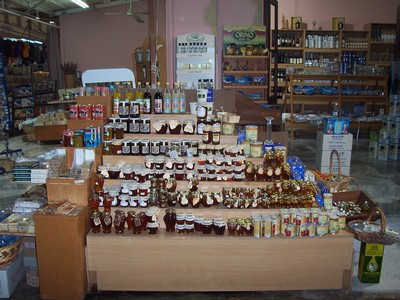
Thyme honey, olive oil and Raki are enticingly displayed to tempt the passer by. Cheese stalls, butchers, bakers, fresh fish and fresh fruit and vegetable stalls vie for space alongside small cafes serving local Cretan dishes.
Chania Market is famous for offering a wide range of local Cretan products, each with unique flavors and centuries of tradition behind them. Here’s a closer look at some of the most popular items you can find, and what makes each of them special.
1. Olive Oil
Crete is renowned for its olive oil, often considered some of the best in the world. The island’s unique climate and traditional harvesting methods give Cretan olive oil its rich, smooth flavor and exceptional quality.
- Cold-Pressed: Look for extra virgin, cold-pressed olive oil, which retains the highest nutritional benefits and purest flavor.
- Taste and Aroma: Expect a fruity aroma with a hint of peppery spice—a signature of authentic Cretan olive oil.
- Health Benefits: Rich in antioxidants and healthy fats, olive oil from Crete is celebrated for its cardiovascular and anti-inflammatory benefits.
Tip: Bring home a bottle of this “liquid gold” as a true taste of Crete!
2. Thyme Honey
Cretan thyme honey is one of the island’s most cherished products, offering a unique taste that reflects the wild thyme growing across the mountains of Crete.
- Distinct Flavor: This honey has a floral, mildly tangy flavor with a rich sweetness that’s unlike any other.
- Natural Sweetener: Perfect for adding to tea, yogurt, or even drizzling over fresh cheese for a local twist.
- Medicinal Properties: Cretan thyme honey is thought to have antibacterial and anti-inflammatory properties, making it not only delicious but also beneficial for health.
Fun Fact: The bees that create this honey feed on wild thyme and other aromatic herbs, giving it its unique taste and medicinal qualities.
3. Mountain Herbs
The market offers a treasure trove of dried herbs, many of which are harvested from the Cretan mountains. These herbs are not only a staple in Cretan cooking but are also valued for their medicinal properties.
- Oregano and Thyme: Key ingredients in Cretan cuisine, adding bold flavor to meat, salads, and potatoes.
- Dittany of Crete: A rare herb found only on the island, used for teas and traditional medicine to aid digestion and healing.
- Sage and Chamomile: Often used for herbal teas, these herbs are calming and perfect for relaxation.
Try a bundle of mountain herbs as a flavorful souvenir that’s easy to pack and use at home.
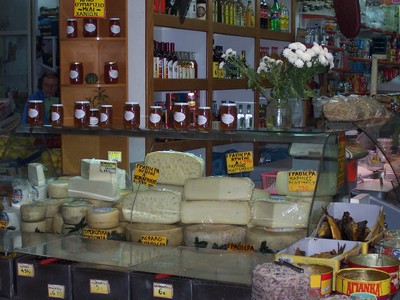
4. Handmade Cheese
Cretan cheese is an essential part of the local diet, with varieties that range from fresh and mild to aged and robust.
- Graviera: A hard cheese with a sweet, nutty flavor that pairs perfectly with honey or olives.
- Mizithra: A soft, mild cheese often used in salads or pastries, similar to ricotta.
- Anthotyro: A fresh, creamy cheese that’s slightly tangy—ideal for spreading on bread or mixing into salads.
Many vendors offer samples, so don’t hesitate to try a few varieties and discover your favorite!
5. Olives and Olive Paste
Crete’s
olives are bursting with flavor, thanks to the island’s perfect growing
conditions. You’ll find both whole olives and rich olive pastes,
perfect for adding a taste of Crete to your meals.
- Green Olives: Known for their firm texture and slightly tangy flavor, often marinated in herbs.
- Black Olives: Dark, sun-ripened, and with a deep, rich flavor.
- Olive Paste: Smooth and savory, made from blended olives, herbs, and olive oil, perfect for spreading on bread or adding to sauces.
Bring home a jar of olive paste for a quick and delicious addition to sandwiches, pastas, and more!
6. Raki
Raki,
also known as tsikoudia, is a traditional Cretan spirit distilled from
grape skins left over from winemaking. It’s an essential part of Cretan
hospitality and is often enjoyed after meals.
- Flavor: Raki is clear, potent, and typically has a strong, slightly fruity taste.
- Drinking Tradition: In Crete, sharing a glass of raki is a symbol of friendship and community.
- Flavored Varieties: Some versions of raki are infused with honey or herbs, giving a sweeter, milder flavor.
Don’t leave Crete without a small bottle of raki—it’s the island’s “spirit” in a glass!
7. Cretan Wines
Cretan
wines are gaining popularity for their unique flavors and local grape
varieties that can’t be found anywhere else in the world.
- Vidiano: A white wine with fruity and floral notes, refreshing and perfect for pairing with seafood.
- Liatiko: One of the oldest grape varieties in Greece, producing red wines with hints of red fruits and spice.
- Local Favorites: Many vendors offer tastings, so you can sample the wines and discover which variety suits your taste.
Take home a bottle to remember the flavors of Crete’s vineyards!
These popular products at Chania Market provide a true taste of Crete’s land, history, and people. Each item brings with it a story and a tradition that you can bring home with you, making your shopping experience at the market both memorable and meaningful.
Chania Market Shopping Guide
Market Hours and When to Visit
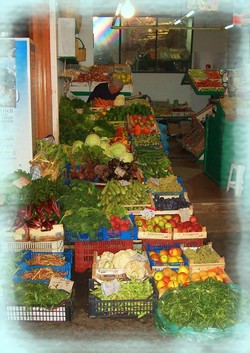
Chania Market is open from Monday to Saturday at 8.00 am to around 1.30pm. In addition, every Tuesday, Thursday and Friday it is also open in the evenings from 5.00pm to 8.00 pm. If you get the chance to visit you must try to buy some of the fabulous foods on offer, or even eat at one of the small cafes there which serve some real Crete dishes - a truly authentic Cretan experience!
There's a weekly outdoor market every Saturday too, just a short walk along from the indoor market. Here you'll find stalls full of fruit and vegetables, fish, cheese and some clothing stalls, handbag and shoe stalls.
If you a visiting Crete and the Hania area then this really is a ‘must see’ experience not to be missed! We might see you there!
Tips for Shopping at Chania Market
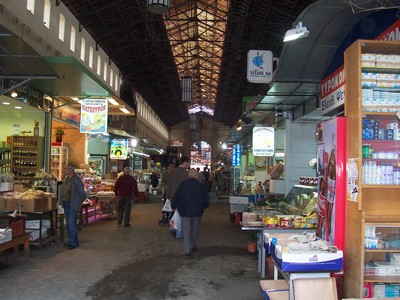
No Chania Market Shopping Guide would be complete without some tips for tourists shopping at Chania Market, so here's our Chania Market shopping tips.
Shopping at Chania Market is an experience that combines history, culture, and the freshest products Crete has to offer. Here are some insider tips to help you make the most of your visit and enjoy everything this bustling market has to offer.
1. Go Early for the Best Selection
If you’re on the hunt for the freshest produce or unique items, aim to get to the market early. Mornings are when vendors bring in their top-quality goods, from freshly caught fish to just-picked vegetables and fragrant herbs. Plus, early mornings are generally quieter, giving you a chance to browse at your own pace.
“The early bird gets the freshest produce!”
2. Take Time to Explore
The market is laid out in a cross shape, with each wing offering a variety of products—from foods to crafts. Spend time wandering through each section to uncover different goods. You’ll find vendors selling everything from homemade cheese and olive oil to handmade leather goods and textiles. Be sure to soak in the market atmosphere and talk to the vendors—many love sharing the stories behind their products.
3. Don’t Be Afraid to Haggle (Gently)
While prices are typically fair, a little friendly bargaining is often part of the Chania Market experience. Especially when buying non-perishable items like herbs, olive wood items, or crafts, feel free to politely negotiate. Vendors are usually open to it, especially if you’re buying multiple items.
4. Sample Local Delicacies
Chania Market offers the perfect opportunity to taste authentic Cretan flavors. Many stalls will offer samples of their products, especially items like cheese, honey, and olives. Tasting is encouraged, so don’t hesitate to try something new! Just remember that a taste often leads to a purchase—so be ready to pick up some delicious local treats.
5. Bring Cash and Small Change
Although some vendors now accept cards, cash is still king at Chania Market, especially for smaller purchases. Bringing smaller bills and change makes transactions smoother and quicker, which both you and the vendors will appreciate.
6. Watch Out for Seasonal Specialties
One of the joys of Chania Market is the variety of seasonal products on display. In spring, look for fresh artichokes and wild greens, while summer brings juicy tomatoes and sweet melons. Autumn is ideal for local nuts and figs, and winter offers citrus fruits. Part of what makes the market so special is the chance to try what’s fresh each season.
7. Take Your Time
Chania Market isn’t just a place to shop—it’s a social hub where locals catch up, and friends are made over shared interests in food and craftsmanship. Slow down, enjoy the sights and sounds, and take it all in. Remember, shopping at the market isn’t just about buying; it’s about experiencing Crete’s unique spirit.
“There’s no rush—Chania Market is best enjoyed at a leisurely pace.”
8. Check Nearby Markets on the Weekend
If your schedule allows, visit on a Saturday. A lively outdoor market pops up just outside the indoor market, offering even more choices like fresh seafood, local wines, and handmade goods. It’s a great way to expand your shopping experience and discover even more Cretan flavors and treasures.
9. Bring a Bag (or Two)
While it may sound simple, bringing a reusable bag or two will make it easier to carry your finds without worrying about plastic bags. Plus, vendors appreciate it! Some visitors even bring small insulated bags to keep cheeses or fish cool if they’re heading elsewhere before going home.
“The Chania Market Shopping Guide wouldn’t be complete without a reminder to bring a bag—you never know what Cretan delights you’ll end up taking home!”
Final Tip
Remember, Chania Market is more than just a shopping destination. It’s a place where history and culture meet modern-day tastes, giving visitors a chance to experience the heart of Crete. Whether you’re a seasoned shopper or it’s your first time, these tips will help you make the most of your time and fill your bags with the best Cretan produce and goods.
Happy shopping, and may your bags be filled with the flavors of Chania!
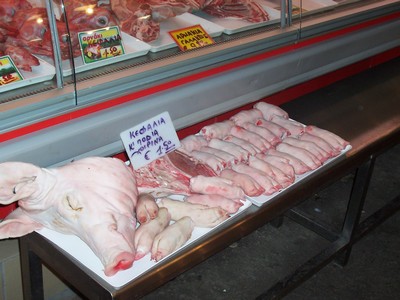
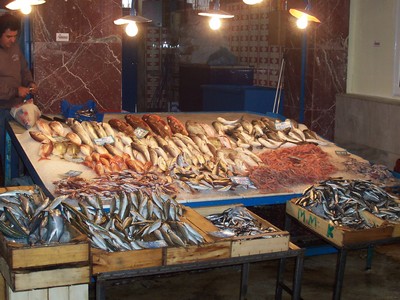
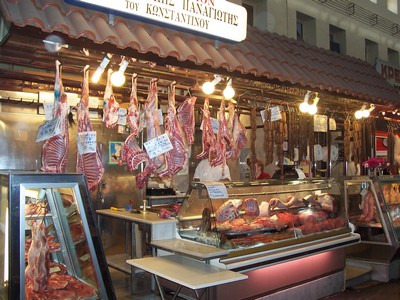
Nearby Markets and Events
Visiting Chania Market is a treat, but did you know there are other nearby markets and events that offer their own unique local flavor? Exploring these spots gives you a fuller sense of Chania’s community spirit and the traditional Cretan lifestyle.
The Chania Market Weekly Outdoor Stalls
Every Saturday, just outside the main Chania Market, you’ll find a lively collection of outdoor stalls. This weekly event attracts vendors from around the area, bringing in extra-special finds like fresh seafood, local wines, handmade jewelry, and organic produce. This market adds another layer of excitement to your shopping, with vendors offering unique items you might not find inside the main market.
“Saturdays at Chania Market are bustling with even more local treasures, making it the perfect day for a shopping adventure.”
Other Markets in Chania
If you’re looking to extend your market experience, there are other markets in Chania that are worth a visit:
- Koum Kapi Seaside Market: Located near the Koum Kapi beach area, this market pops up on certain weekdays and offers fresh fish, fruits, and vegetables. The seaside view makes it a charming spot to shop and soak up some Cretan sun.
- Street Market in Splantzia: Set in the charming neighborhood of Splantzia, this smaller market often features vendors selling handmade crafts, herbs, and souvenirs. It’s ideal if you’re looking for unique gifts or small mementos to bring home.
Seasonal Festivals and Events
Chania hosts several festivals throughout the year, which add to the excitement of visiting. Here are a few events that often feature pop-up stalls and food vendors:
- Raki Festival (October–November): Celebrating Crete’s beloved spirit, raki, this festival includes raki distillation demonstrations, local snacks, and live music. It’s a great time to sample the famous drink while enjoying the festive atmosphere.
- Olive Harvest Festival (November): This annual event honors Crete’s rich olive tradition. Sample fresh olive oil and learn about the harvesting process from local farmers and olive oil producers.
- Wine Festivals (Various Dates): Several Cretan towns, including Chania, celebrate the island’s wine heritage with festivals where you can taste wines from local vineyards. These events often feature food stalls with local cheeses, meats, and sweets.
Nearby Farmers’ Markets in Surrounding Villages
If you’re up for a short drive, several nearby villages host their own markets, offering more traditional Cretan goods and handmade crafts. Some to consider include:
- Vamos Farmers’ Market: Known for its organic produce, local honey, and herbal teas.
- Kissamos Market: Famous for fresh fish, seafood, and unique Cretan pastries.
“Exploring village markets adds a lovely rural touch to your Cretan adventure, connecting you with the island’s farming traditions.”
Tips for Enjoying Local Markets and Events
- Bring Cash: Many of these outdoor stalls and smaller markets prefer cash, so having smaller bills on hand is helpful.
- Wear Comfortable Shoes: Exploring Chania Market and the nearby outdoor stalls can mean a lot of walking. Comfortable shoes make the experience all the more enjoyable!
- Get There Early: To experience these markets at their best and get first pick on goods, an early arrival is ideal.
These extra markets and events add to the excitement of exploring Crete’s local culture. So grab your bags, and let the Chania Market Shopping Guide lead you to these nearby gems! Whether it’s fresh seafood, hand-pressed olive oil, or a glass of local wine, each of these markets and events adds a memorable layer to your Chania adventure.
Frequently Asked Questions About Chania Market
- What
are the main attractions at Chania Market?
Chania Market is known for its fresh produce, Cretan herbs, olive oil, honey, and authentic Cretan foods. - When
is the best time to visit Chania Market?
The market is open from Monday to Saturday, with peak times in the mornings and extended evening hours on select days. - Are
there any outdoor markets near Chania Market?
Yes, there is a weekly outdoor market every Saturday near the indoor market, offering fresh produce, fish, and local goods.
Intrigued by Cretan Gastronomy? - Visit this Culinary Guide to Crete
We hope you have enjoyed our Chania Market Shopping Guide and look forward to seeing you there!
Want to discover even more of what Crete has to offer?
Explore hidden gems, must-visit spots, and insider tips below!
Just Some of the Reasons We Love Crete
Did you love this page? Please share it with your friends!
© Copyright All Original Content 2006 - 2025 Completely-Crete.com. All
Rights Reserved. Reproduction in whole or in part without permission is
not permitted.
Click here to learn about developing your own money-generating website
from Solo Build It! - even with little or no web experience!
